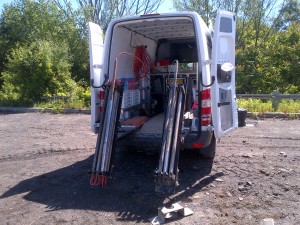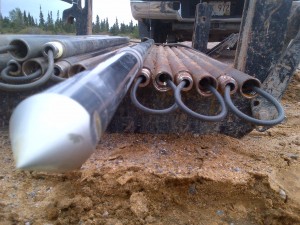The Membrane Interface Probe (MIP) and Laser Induced Fluorescence (LIF) are both direct push (i.e., down-hole) screening tools with semi-quantitative capabilities that are used to log the relative concentration of volatile organic compounds (VOCs), non-aqueous phase liquids (NAPLs) and electrical conductivity (an indicator of clay content) with depth in soil.
The Hydraulic Profiling Tool (HPT) is also a direct push technology used to measure subsurface permeability in real time. This tool measures the pressure, using a down hole transducer, required to inject a constant flow of water into the soil as the probe is advanced into the subsurface. The HPT screening tool has hydraulic conductivity estimation capabilities in the saturated zone.
These approaches allow massive amounts of high-resolution site characterization data to be collected, quickly and cost-effectively. When combined with traditional Phase II Environmental Site Assessment (ESA) methods, they greatly enhance the understanding of contamination presence, concentration and distribution in the subsurface, which can lead to more focused remediation programs.
For more info visit Vertex on the web at https://vertexenvironmental.ca/services/high-resolution-characterization/


